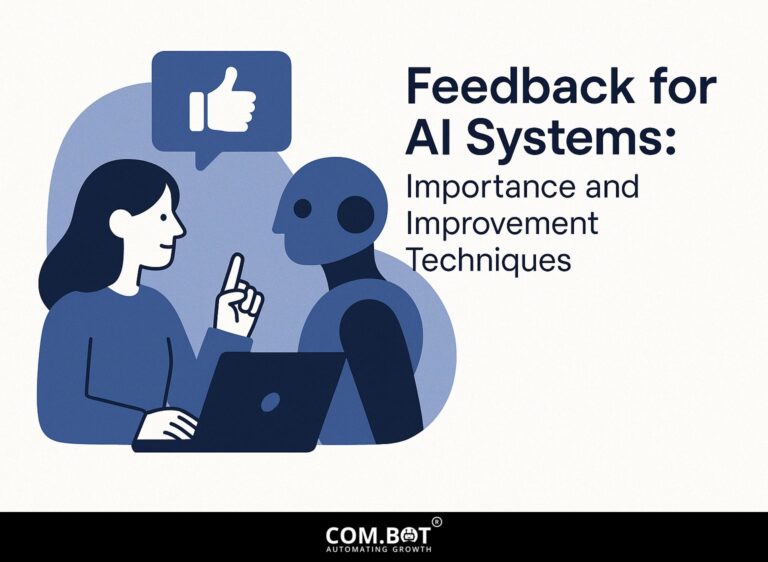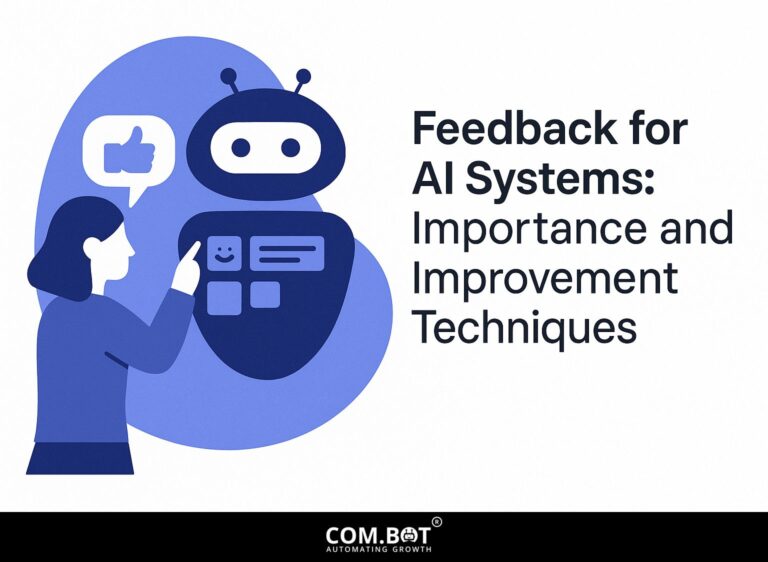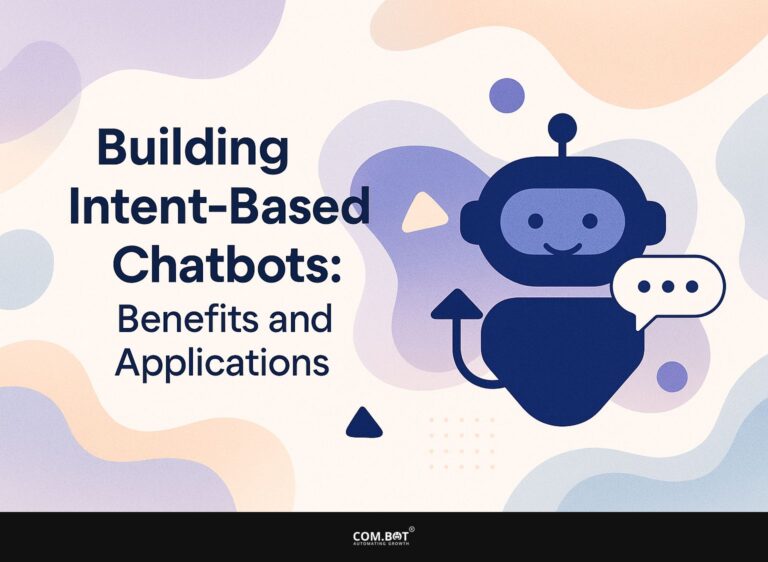Feedback for AI Systems: Importance and Improvement Techniques

As artificial intelligence changes quickly, creating a strong feedback process is key to improving performance. As machine learning and generative AI technologies improve, it’s important to understand the role of feedback systems. This article explores methods for gathering and using feedback, helping AI systems become more accurate and build user trust. Come and find out how feedback can make intelligent systems better.
Key Takeaways:
- 1 Importance of Feedback in AI Systems
- 2 Types of Feedback Mechanisms
- 3 AI Feedback Mechanisms Statistics
- 3.1 AI Feedback and Bias Amplification: Human-AI Interaction Bias
- 3.2 AI Feedback and Bias Amplification: Impact on Human Decisions Over Time
- 3.3 AI Feedback and Bias Amplification: Impact on Social Judgements
- 3.4 AI Feedback and Bias Amplification: AI Influence in Business Applications
- 3.5 Human-in-the-Loop Approaches
- 3.6 Automated Feedback Systems
- 4 Techniques for Collecting Feedback
- 5 Implementing Feedback for Improvement
- 6 Challenges in Feedback Implementation
- 7 Upcoming Developments in AI Feedback Systems
- 8 Frequently Asked Questions
- 8.1 What is the importance of feedback for AI systems?
- 8.2 How does feedback help in improving AI systems?
- 8.3 What type of feedback is most effective for AI systems?
- 8.4 Can AI systems learn from negative feedback?
- 8.5 How can we make sure that feedback given to AI systems is fair and impartial?
- 8.6 What are some techniques for improving the feedback process for AI systems?
Definition and Overview
Feedback in AI means using the results and user interactions to improve machine learning models and make them work better.
This process makes the model better by using feedback. User input directly affects upcoming decisions.
In a recommendation system, when users rate the items they view, that information is used to adjust the suggestions they receive later.
Tools like Google Analytics can be integrated to monitor user behavior and engagement, allowing for continuous tuning of algorithms.
Incorporating A/B testing enables developers to compare variations of models, determining which performs best based on specific user feedback.
These methods help AI systems improve their accuracy and make users happier.
Significance in AI Development
AI feedback systems reduce errors by up to 30% and increase user trust in automated systems.
Consistent user feedback can drive improvements in AI performance. For instance, in natural language processing, using user corrections helps understand the context better, making conversations feel more natural.
Tools like TensorBoard allow developers to track model metrics over time, enabling them to visualize the impact of feedback on algorithms. In repeated testing, models are regularly improved based on how users interact with them. This allows virtual assistants and customer service bots to improve and meet user needs as time goes by.
Importance of Feedback in AI Systems
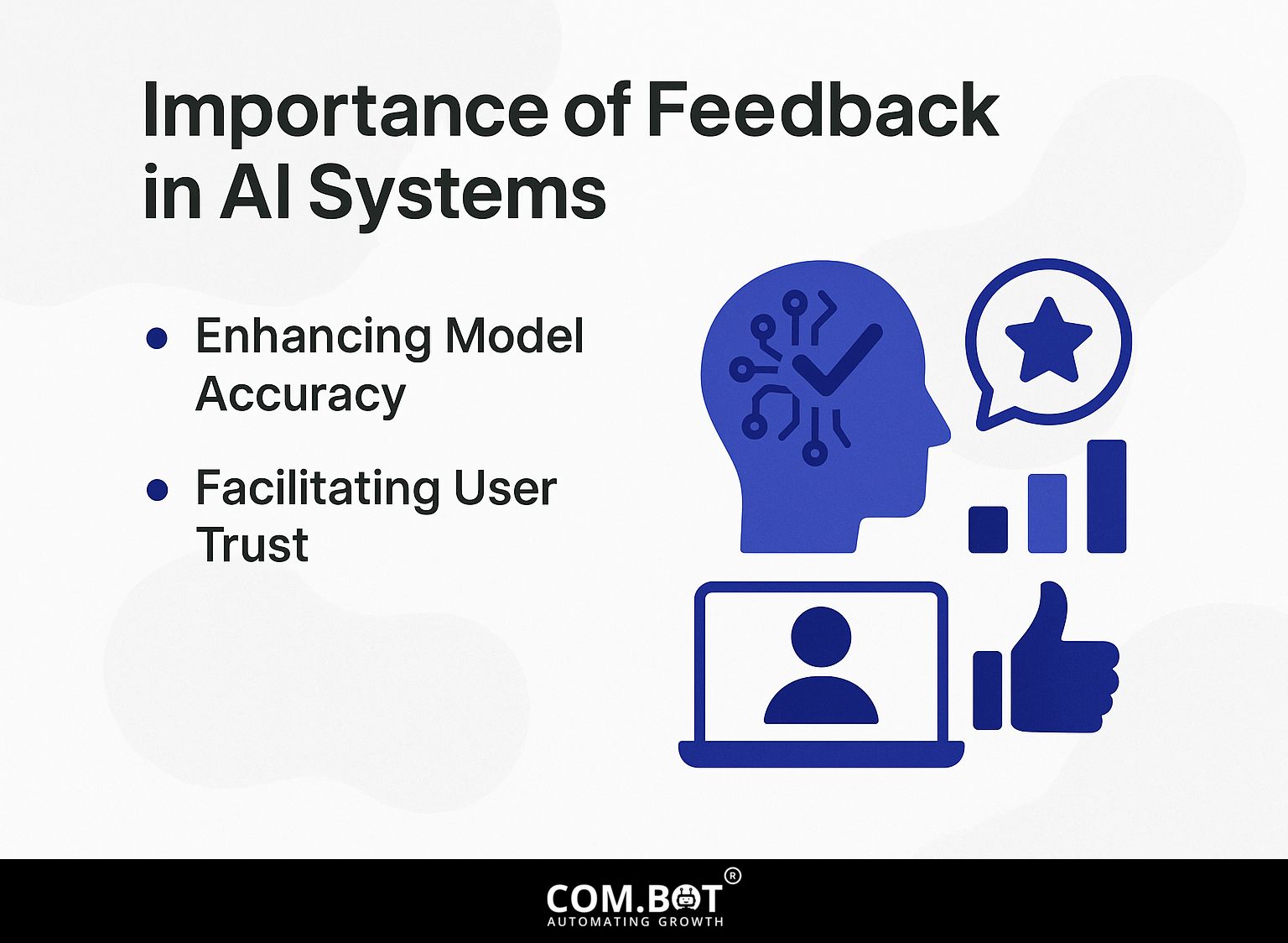
Feedback is essential for AI systems, helping to improve model accuracy and increase user confidence over time. As mentioned in our discussion on feedback for AI systems: importance and improvement techniques, continuous feedback loops play a critical role in refining AI models and adapting to user needs.
Enhancing Model Accuracy
Adding feedback can greatly improve model accuracy, often increasing it by 15%-20% in applications that process data immediately.
Techniques like reinforcement learning are fundamental in this process. For example, with TensorFlow, models can learn to predict and improve their results based on how users interact with them.
A good example of this can be seen in image recognition systems that change based on user corrections, gradually improving with experience.
In natural language processing (NLP), chatbot models use feedback to understand user needs, resulting in more accurate answers. These methods make accuracy better and create a more engaging experience for users.
Facilitating User Trust
User trust in AI systems can be reinforced by implementing transparent feedback mechanisms, leading to a 40% increase in positive user interactions.
Companies like Amazon have successfully integrated user feedback into their AI solutions, refining their recommendation engine based on customer preferences and reviews.
For example, Amazon studies customer reviews to make better product recommendations and improve user satisfaction.
Similarly, Microsoft’s Azure AI provides transparency in its recommendations by allowing users to understand the reasoning behind suggested actions.
By adopting strategies such as user surveys, feedback loops, and visible metrics, organizations can create an engaging user environment that encourages trust and long-term interaction.
Types of Feedback Mechanisms
AI uses different feedback methods, including those that involve humans and those that run by themselves, each offering unique benefits. For a deeper understanding of how these mechanisms contribute to system improvement, delve into our comprehensive study on feedback importance and improvement techniques.
AI Feedback Mechanisms Statistics
AI Feedback Mechanisms Statistics
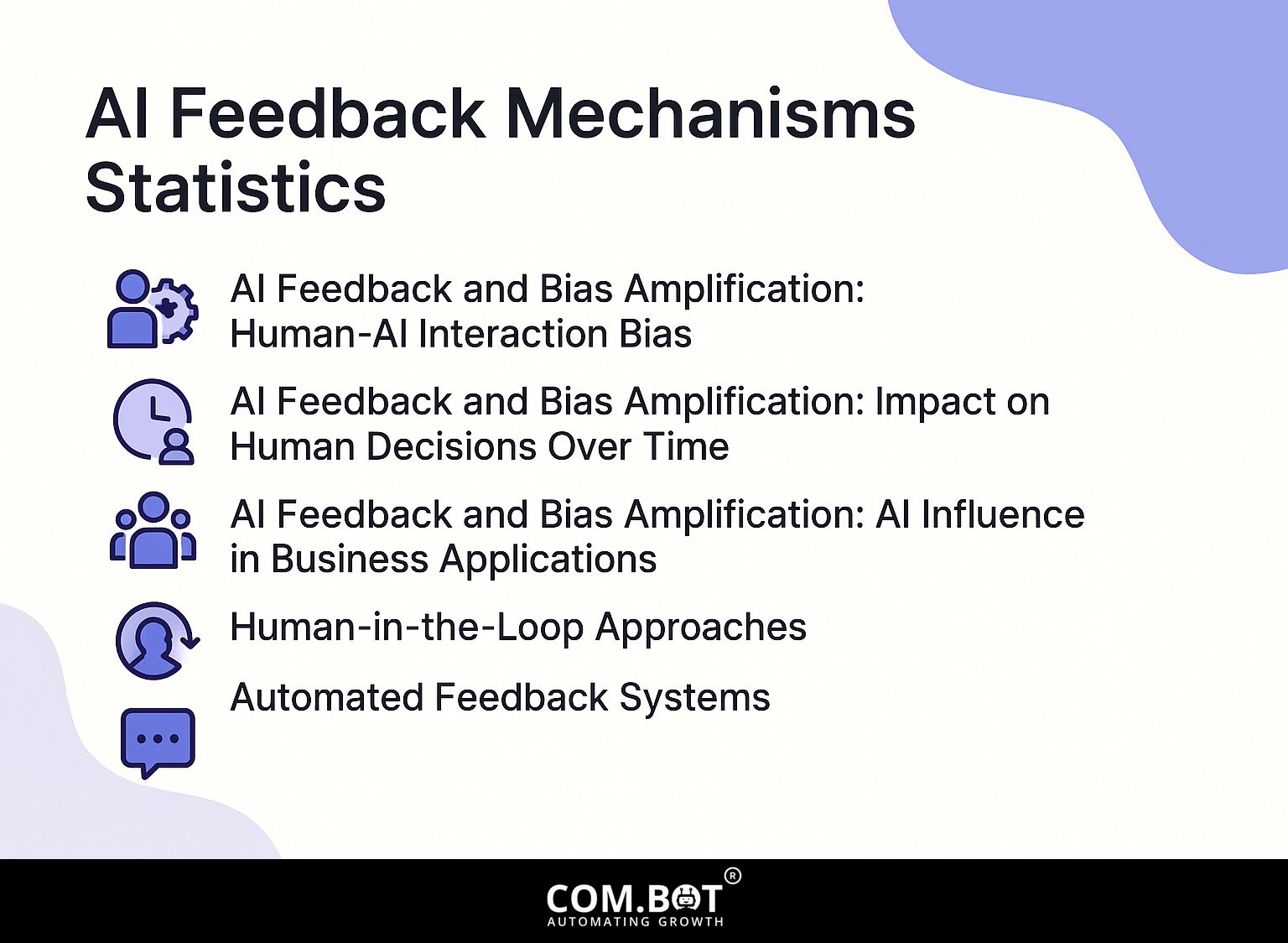
AI Feedback and Bias Amplification: Human-AI Interaction Bias
AI Feedback and Bias Amplification: Impact on Human Decisions Over Time
AI Feedback and Bias Amplification: Impact on Social Judgements
AI Feedback and Bias Amplification: AI Influence in Business Applications
The AI Feedback Mechanisms Statistics Look into how AI systems affect human bias and choices, concentrating on social evaluations and business uses. This data shows the complicated relationship between what people think and AI-based feedback. It highlights both the increase of existing biases and the strong effect on human choices.
AI Feedback and Bias Amplification illustrates how AI can magnify human biases. Initially, 53.08% of human judgments 65.33% 56.3%
- Impact on Human Decisions Over Time: The Initial Bias in RDK Task 0.62% 5.03%
- Impact on Social Judgements: Initially, 32.36% 38.2%
- AI Influence in Business Applications: A substantial 90% 80%
These statistics reveal critical implications of AI feedback mechanisms. While AI can improve the speed of decision-making, it might also continue and increase biases. Knowing these factors is important for creating AI systems that are accurate and fair. This helps make sure that AI supports human decision-making rather than adding to existing biases.
Human-in-the-Loop Approaches
Human-in-the-loop methods use people’s feedback to guide AI learning, significantly improving results in difficult situations.
For example, OpenAI uses feedback from people during model training by hiring annotators to assess and improve the results. This process improves accuracy and relevance, especially in tasks like grasping subtle language or ethical thinking.
While this method can greatly improve AI abilities, it also has possible downsides, like depending on personal human opinions, which might cause bias. Mixing human supervision with machine-run systems is important for creating strong AI that successfully satisfies user requirements.
Automated Feedback Systems
Systems that automatically collect and examine performance data work without needing people to step in. This helps AI models get better all the time.
These systems use live data to improve how users interact, especially in applications like chatbots.
For instance, platforms like Dialogflow can be integrated with machine learning algorithms to tweak responses based on user inquiries. These tools change the model based on response accuracy and how happy the users are with the answers.
To keep the model accurate, people need to check feedback often. Combining automated processes with careful human input makes the chatbot helpful and effective.
Techniques for Collecting Feedback
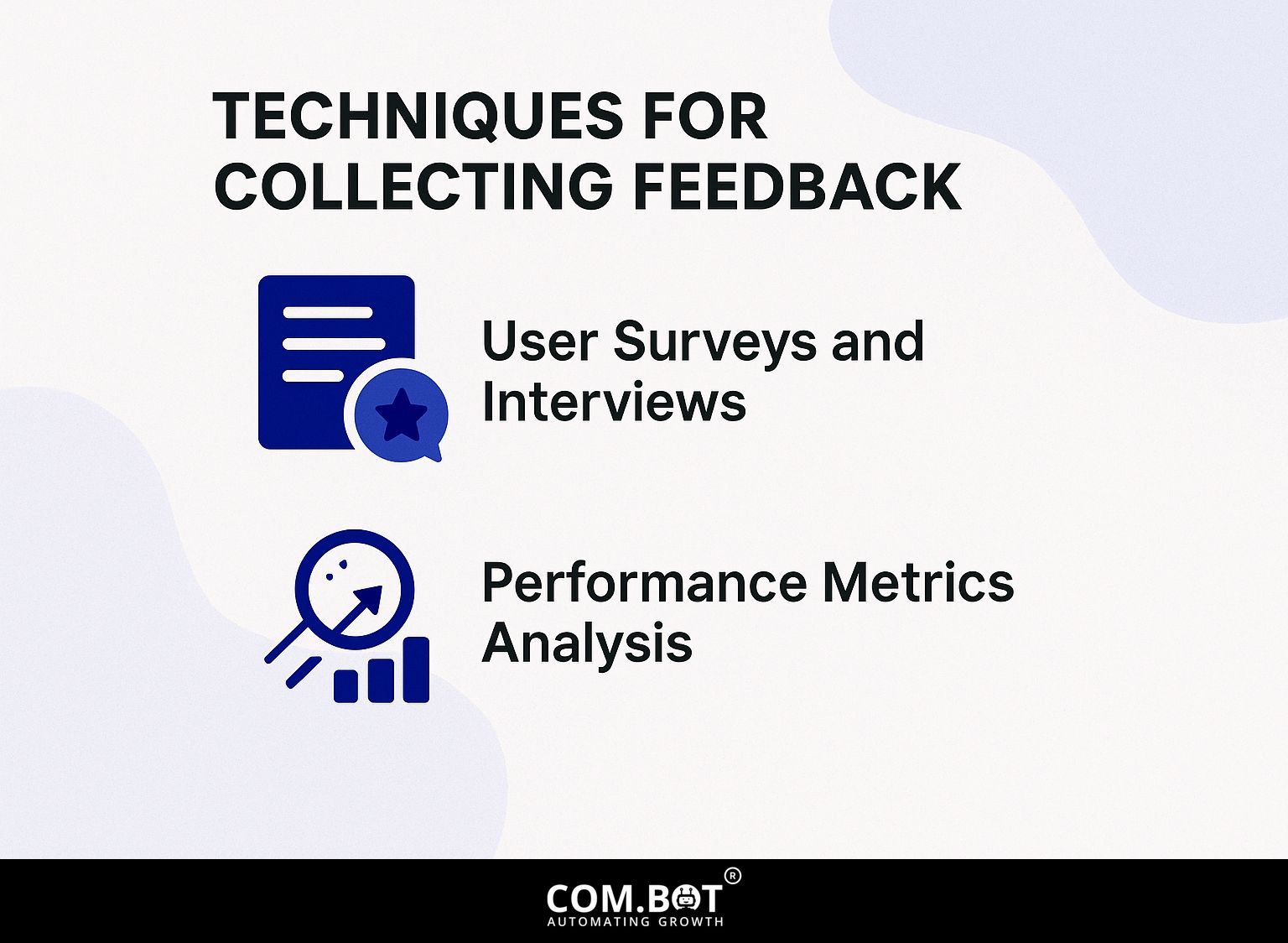
Gathering feedback effectively is important for improving AI systems. This includes using user surveys and detailed performance metrics analysis. Worth exploring: Feedback for AI Systems: Importance and Improvement Techniques.
User Surveys and Interviews
User surveys can provide useful feedback, with 25-30% of people responding in carefully planned projects, which can significantly change AI models.
- To create effective user surveys, begin by setting clear goals-what exact feedback do you need?
- Use Google Forms for simple surveys or SurveyMonkey for surveys with extra features like branching paths. Keep your surveys concise, with 10 questions or fewer, to maintain engagement.
- To maximize response rates, consider offering an incentive, such as entry into a giveaway. Send reminder emails to non-respondents a few days after the initial request.
This method can greatly increase involvement and give useful data for improving your AI.
Performance Metrics Analysis
Analyzing performance metrics enables organizations to pinpoint model weaknesses, often resulting in a 20% reduction in error rates after adjustments.
Important measures to watch are accuracy, sensitivity, and the F1 score. Precision measures the percentage of the model’s positive predictions that are accurate, while recall measures the percentage of actual relevant cases identified by the model.
The F1 score helps balance accuracy and sensitivity, particularly when there are differences in class sizes. To analyze these metrics effectively, tools like Tableau or Google Data Studio can visualize the data, allowing teams to spot trends over time.
This organized method supports decisions based on data, improving how models work.
Implementing Feedback for Improvement
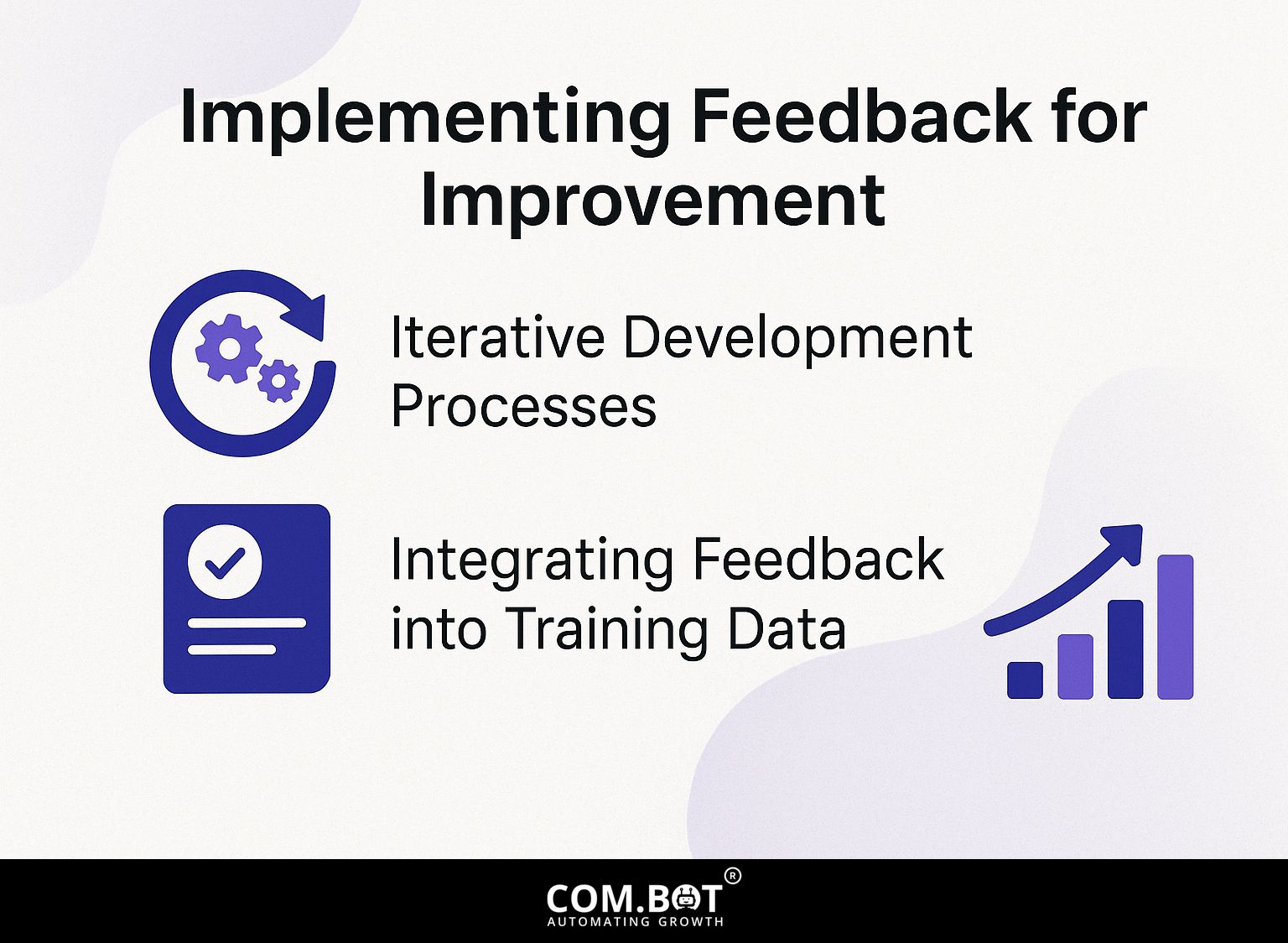
Using feedback is key to improving AI, mainly by repeatedly updating and including feedback in training data.
Iterative Development Processes
Repeating development methods, like Agile, help AI teams quickly use feedback to improve models in 2-4 week periods.
For example, Spotify uses Scrum to divide tasks into short periods and frequently improve its recommendation algorithms by analyzing user behavior.
By collecting data after each sprint, teams can pivot their strategies, enhancing features that engage users most effectively. Tools like JIRA help track these iterations, facilitating seamless communication across teams.
Developers use A/B testing to see which models work better by looking at real user actions, ensuring changes meet user preferences.
This approach supports continuous growth, which is essential in the fast-changing area of AI.
Integrating Feedback into Training Data
Including feedback in training data enhances supervised learning, helping models to manage error rates of 10-15% more effectively.
One effective method for incorporating feedback is to periodically retrain your model with updated datasets, reflecting recent inputs to improve accuracy.
Using techniques such as introducing noise to existing samples or generating fake examples can increase the diversity of your training data.
For instance, if user feedback indicates that your model struggles with specific scenarios, you can gather more examples of those cases and blend them into your dataset. This practice improves your model and helps it manage real-world changes.
Challenges in Feedback Implementation
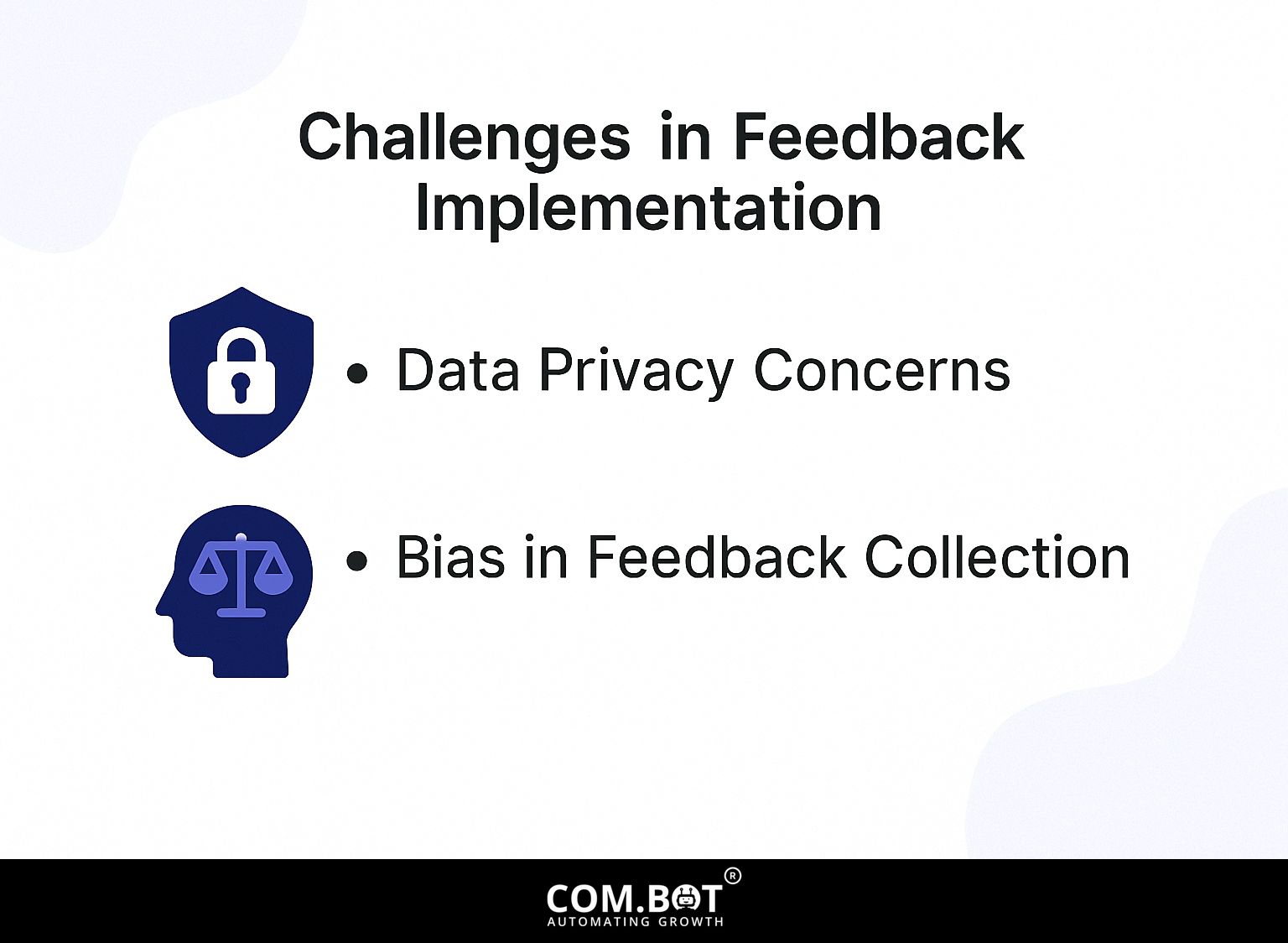
Using feedback in AI systems offers advantages but comes with major issues, like worries about data privacy and built-in bias. For more insights, explore our detailed discussion on Feedback for AI Systems: Importance and Improvement Techniques.
Data Privacy Concerns
Worries about data privacy can cause a 30% decrease in user confidence in AI systems. Therefore, these systems must follow rules such as GDPR.
To maintain user trust, organizations should adopt best practices such as anonymizing personal data to prevent identification.
Using clear user agreements makes sure individuals know how their feedback will be used.
Regular audits of data handling processes can also help in identifying potential vulnerabilities.
Tools like OneTrust help with managing compliance, and platforms like SurveyMonkey let users choose not to share data, strengthening the focus on privacy and trust.
Bias in Feedback Collection
Bias in feedback collection can skew AI model training, resulting in as much as a 20% drop in performance accuracy in critical applications.
To mitigate bias, consider these actionable strategies:
- Send surveys to various groups to gather different opinions, ensuring the feedback includes a balanced variety of individuals.
- Employ tools like SurveyMonkey for easy demographic tracking or Google Forms for broad distribution.
- Use detailed feedback from interviews or group discussions to collect thorough information.
This varied method results in a fairer grasp of user needs and lowers the chance of training AI models with biased data, which improves accuracy overall.
Upcoming Developments in AI Feedback Systems
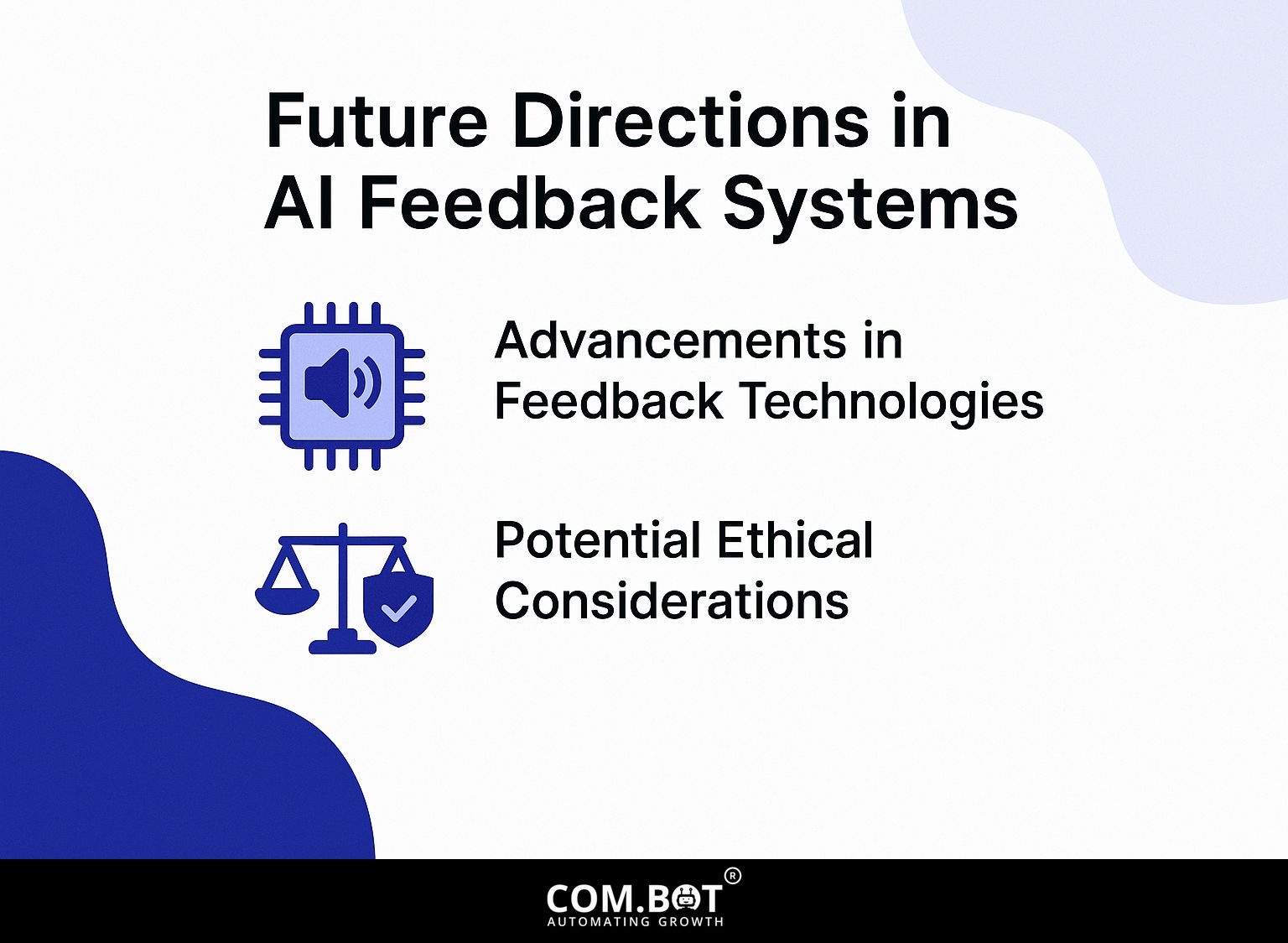
Upcoming developments in AI feedback systems aim for better technologies and ethical concerns in feedback methods. Those interested in exploring effective feedback strategies might find value in our comprehensive guide on improving AI feedback systems.
Advancements in Feedback Technologies
Recent advancements in feedback technologies include AI-driven sentiment analysis tools that improve user interaction analysis by 40% in real-time.
Tools like Label Studio stand out by allowing companies to label data interactively, streamlining the process for machine learning projects. This platform collects fast feedback and gives a clearer view of users’ opinions and actions.
For example, connecting Label Studio with your feedback system can help you collect detailed information from customer reviews, improving the overall data quality. With these technologies, companies can make their products and services better using helpful data, which leads to happier customers who participate more.
Potential Ethical Considerations
Addressing possible ethical issues in AI feedback systems calls for careful focus on user data rights and reducing algorithmic bias.
To uphold ethical standards, organizations should implement user consent protocols before collecting data. This includes clear and accessible privacy policies as well as options for users to opt out.
Transparency is essential; algorithms need to be understandable to avoid unfair biases in results. Regular audits of the AI systems can also identify and correct any bias that may arise, ensuring fairness in feedback.
By focusing on these methods, companies can build public trust and improve user experience while protecting individual rights.
Frequently Asked Questions
What is the importance of feedback for AI systems?
Feedback is important for AI systems because it helps them keep improving and make correct predictions. Without feedback, AI systems may become stagnant and unable to adjust to new data or changes in their environment.
How does feedback help in improving AI systems?
Feedback gives AI systems details on how they are doing, helping them find and fix mistakes or biases in how they make decisions. Continuous improvement can lead to more accurate and reliable outcomes.
What type of feedback is most effective for AI systems?
The most effective feedback for AI systems is specific and timely. This means providing detailed information on what the AI system did well and what it needs to improve on, as well as providing feedback in real-time to allow for immediate adjustment.
Can AI systems learn from negative feedback?
Yes, AI systems can learn from negative feedback just as they can from positive feedback. In fact, negative feedback can be more useful as it points out areas for improvement and helps AI systems make the needed changes for better performance later.
How can we make sure that feedback given to AI systems is fair and impartial?
To get fair feedback, it’s necessary to have a varied group of people giving input. This can help find any possible biases and fix them to support fair and correct decisions made by AI systems.
What are some techniques for improving the feedback process for AI systems?
Some ways to make feedback better include gathering feedback from different sources, creating a continuous feedback process, and frequently reviewing and changing the feedback process to keep it useful. Clear communication and openness between AI systems and users can make feedback better.

